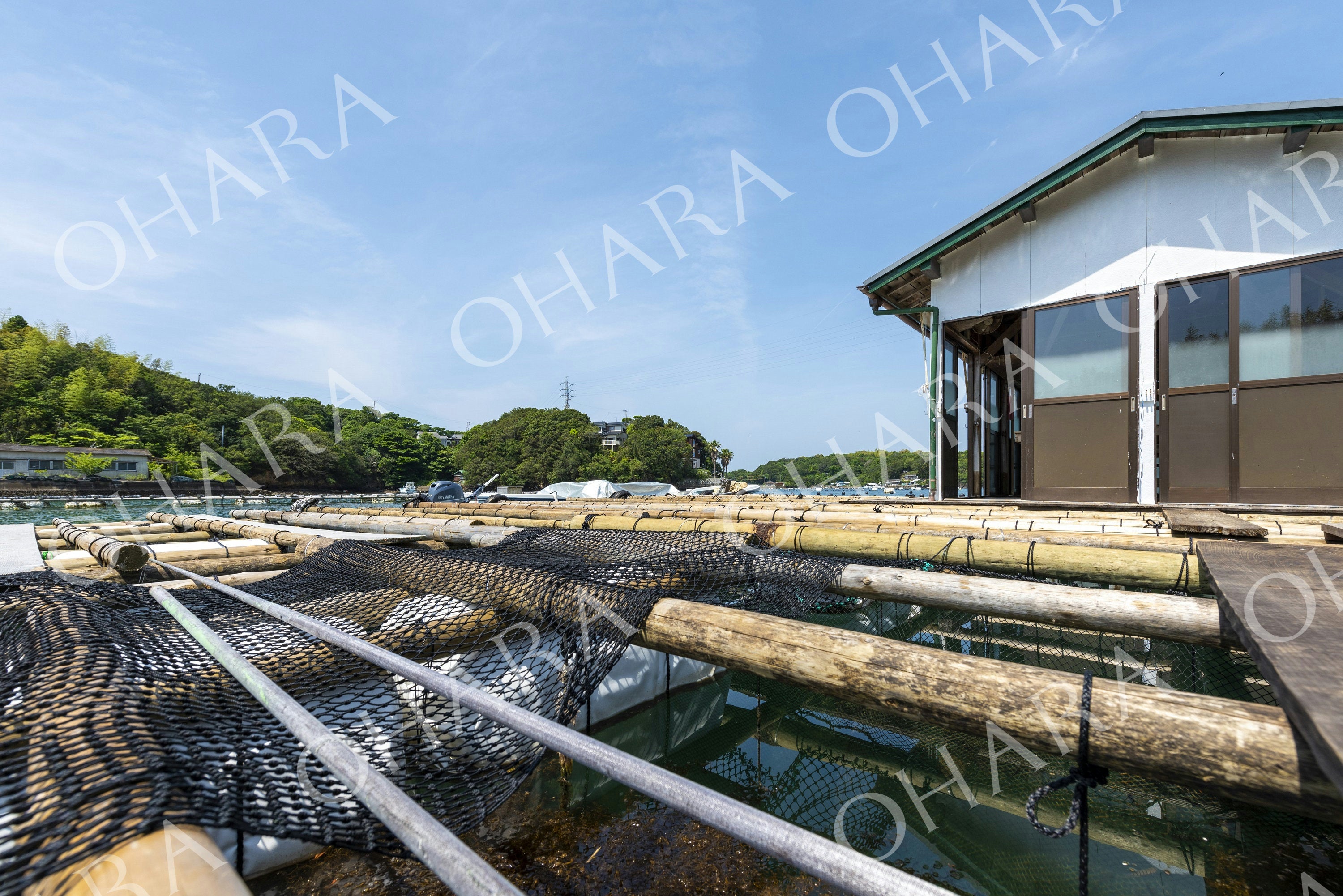How Akoya pearls are made
How Akoya pearls are made
Akoya pearls take about four years to grow before being delivered to you as jewelry. At OHARA PEARL, we do everything by hand, from nurturing the mother shells that produce pearls to processing them.
1. Collecting seedlings and cultivating juvenile clams
 Many of the mother oysters used to grow pearls are artificially fertilized and hatched. This is called seeding. The seedlings are kept in a tank for 1 to 2 months, and after being transferred to the sea, they grow into mother shells for about 2 years. A lot of skill and affection are applied to cleaning the deposits, changing the cage according to the growth, sorting the food, adjusting the water temperature, etc. until it grows. Growing from spat also helps conserve natural resources.
Many of the mother oysters used to grow pearls are artificially fertilized and hatched. This is called seeding. The seedlings are kept in a tank for 1 to 2 months, and after being transferred to the sea, they grow into mother shells for about 2 years. A lot of skill and affection are applied to cleaning the deposits, changing the cage according to the growth, sorting the food, adjusting the water temperature, etc. until it grows. Growing from spat also helps conserve natural resources.
2. Tailoring
 Once the mother oyster has grown, it is necessary to put the pearl nucleus into its body. This process is a big job for shellfish. In order to soften the reaction, it first enters another cage and suppresses physiological activity. This is called "tailoring".
Once the mother oyster has grown, it is necessary to put the pearl nucleus into its body. This process is a big job for shellfish. In order to soften the reaction, it first enters another cage and suppresses physiological activity. This is called "tailoring".3. Shellfish holder/plugger
 Before inserting the nucleus into the body of the shellfish, first open the mouth of the shellfish. For that purpose, the prepared mother oysters are moved to another basket and arranged with the mouth facing upwards. As a result, the clams, which have difficulty opening their mouths, open their mouths wide to breathe. This is the process called “fresh shellfish”. After that, we perform "plugging" to fix the open mouth by inserting a plug.
Before inserting the nucleus into the body of the shellfish, first open the mouth of the shellfish. For that purpose, the prepared mother oysters are moved to another basket and arranged with the mouth facing upwards. As a result, the clams, which have difficulty opening their mouths, open their mouths wide to breathe. This is the process called “fresh shellfish”. After that, we perform "plugging" to fix the open mouth by inserting a plug.4. Nucleus insert

Now it's time to insert the core. The nucleus inserter inserts the spherical nucleus and the cells (pieces) that create the mother-of-pearl into the mother oyster together. You need at least 10 years of experience to become one. If you make a mistake at this stage, the mother oyster will weaken and die, or it will not turn into a pearl.
Craftsmen work with great care so as not to damage the shells more than necessary.
5. Curing (temporary hanging)
 Inserting the nucleus is a big job for shellfish. First, return to the calm sea and give it a rest so that your physical strength can recover. After that, we will move to offshore while watching the situation.
Inserting the nucleus is a big job for shellfish. First, return to the calm sea and give it a rest so that your physical strength can recover. After that, we will move to offshore while watching the situation.6. Aquaculture management
 After the fish are moved offshore, care begins, such as cleaning the shells by hand, taking measures against high water temperatures, and evacuating from red tides. Wisdom and technology cultivated through many years of experience are also required for these cares that deal with nature. It is said that it takes thousands of human hands to create a single pearl.
After the fish are moved offshore, care begins, such as cleaning the shells by hand, taking measures against high water temperatures, and evacuating from red tides. Wisdom and technology cultivated through many years of experience are also required for these cares that deal with nature. It is said that it takes thousands of human hands to create a single pearl.7. Hamage, pearl collection
 This is the process of finally extracting the pearl. The timing of the orb extraction varies depending on the time of the nucleus insertion, the location, and the natural environment, but generally it takes place from December at the end of the year to around February of the following year. A part of the fish is stripped for testing, and when it is in the best condition, it is "hamage". Once the pearl has been removed from the oyster, it is thoroughly washed to remove any dirt.
This is the process of finally extracting the pearl. The timing of the orb extraction varies depending on the time of the nucleus insertion, the location, and the natural environment, but generally it takes place from December at the end of the year to around February of the following year. A part of the fish is stripped for testing, and when it is in the best condition, it is "hamage". Once the pearl has been removed from the oyster, it is thoroughly washed to remove any dirt.It takes about two years to nurture the mother oysters, and after another one to two years of culturing, the pearls are finally born.
8. Sorting/processing
 Dried pearls are sorted one by one by skilled eyes. The selected pearls are then handed over to skilled jewelery craftsmen and finally delivered to customers as jewellery.
Dried pearls are sorted one by one by skilled eyes. The selected pearls are then handed over to skilled jewelery craftsmen and finally delivered to customers as jewellery. 